 Image search results - "Migration" Image search results - "Migration" |
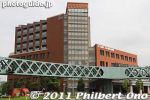
The Japanese Overseas Migration Museum is operated by the Japan International Cooperation Agency (JICA) in Yokohama. There are permanent exhibitions explaining the immigration to Hawai'i, continental USA, and South America.
|
|

There are also changing or special exhibitions so it's worth visiting more than once. Besides exhibition rooms, the museum has a reference library (closed on Sun.) with a collection of 20,000 books and materials about Japan's immigration.It even has kami-shibai (picture card stories). You can browse through recent Japanese novels such as "Japanese-Americans 99 Years of Love."
|
|
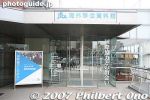
Entrance to Japanese Overseas Migration Museum. 10 am - 5 pm (enter by 4:30 pm), closed Mon. (open if a national holiday and closed on Tue. instead) and Dec. 29-Jan. 3.The museum is operated by the Japan International Cooperation Agency (JICA) which is Japan's version of the Peace Corps.
|
|
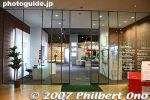
The museum also has a restaurant with an outdoor terrace (open 11:30 am - 1:30 pm, 5:30 pm - 9 pm).
|
|
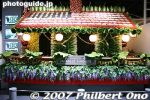
Oregon Japanese farmers
|
|
|

Total number of emigrants from Japan was 760,000.
|
|

This map shows how many emigrated from each prefecture. Hiroshima had a whopping 109,893 number of emigrants.
|
|
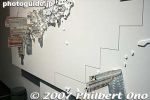
Okinawa also had a large number of emigrants: 89,424
|
|
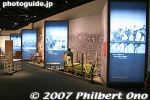
Hawaii exhibit had a Newspaper ad: "Go to Hawaii as a migrant worker and become rich"
|
|
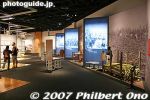
Hawaii emigration exhibit at Japanese Overseas Migration Museum, Yokohama
|
|

Hawaii emigration exhibit at Japanese Overseas Migration Museum, Yokohama
|
|

Kanyaku imin for emigrants to Hawaii
|
|
|
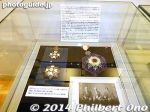
Medals donated by Robert Walker Irwin's granddaughter Yukiko Irwin to the Japanese Overseas Migration Museum. On left is the Royal Order of Kamehameha I, Knights Grand Cross Star. The medal on the right is The Order of the Rising Sun.
|
|
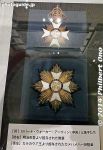
Royal Order of Kamehameha I, Knights Grand Cross Star awarded by King Kalakaua for distinguished service to the king and the people of Hawaiʻi.
|
|

Roster of kanyaku imim laborers to Hawaii. 1885 (replica)
|
|
|

Employee ID tag (bango 番号) from Maui, and a check sent home by an immigrant in Hawaii (replica). 1889
|
|

Passport issued to one of the first Kanyaku-imin emigrants to Hawaii. (Replica)
|
|

History of Japanese emigration to overseas.
|
|

History of Japanese emigration: Embarking on the voyage and emigration restrictions.
|
|

US-Japan Treaty of Amity and Commerce, signed in 1858 in Edo (replica)
|
|

Tariff Convention, signed on July 25, 1866 in Edo. (Replica)
|
|

"Journey to the Americas" exhibit
|
|

Passport dating from 1866-1876. From 1876, the present Japanese word for "passport" (ryoken 旅券) began to be used. Before that it was called "menjo 免状."
|
|
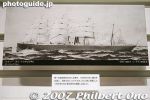
S.S. City of Tokio brought the first Kanyaku Imin to Honolulu, Hawai'i in Feb. 1885 after leaving Yokohama in Jan. A few months later in June 1885, the ship ran aground and sank in Tokyo Bay.
|
|
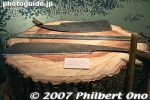
Tools used by Japanese immigrants in Brazil.
|
|

Passports issued to picture brides stopped in 1920. This young couple had a picture marriage right before then.
|
|

Anti-Japanese campaign poster in Washington state, USA, 1921.
|
|

Japanese-Americans during World War II.
|
|

The S.S. Nippon Maru, the last emigrant ship that departed Yokohama on Feb. 14, 1973. Migrants by ship decreased dramatically by the 1960s due to air travel and higher living standards in Japan.
|
|
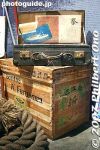
Luggage to Brazil. Crate has marking for Omi-cha tea from Shiga Prefecture.
|
|
|

Guide book for those wanting to emigrate to Hawaii, 1904. (replica)
|
|

What the immigrants brought with them to Brazil.
|
|

Luggage and personal effects brought by the immigrants. This person arrived Brazil in 1931. Japanese footwear, umbrella, sewing kit, hair cutter.
|
|

The person brought a karate uniform when emigrating to Brazil in 1968 and established a karate school.
|
|

Cosmetics
|
|

Medical things and medicines
|
|
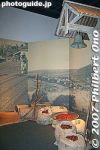
Coffee in Brazil
|
|
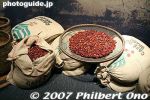
Coffee beans in Brazil
|
|
|
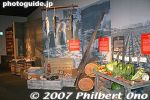
Farmers and fishermen in the Americas.
|
|
|
|

Sports, religion, women's groups, and other Japanese organizations.
|
|

Agriculture
|
|

Japanese schools were started so that the nisei children could learn Japanese and be better prepared when or if their parents decided to move back to Japan.
|
|

Japanese school activities
|
|

Japanese-language newspapers started to be published (mimeographed) from the 1890s in the San Francisco Bay Area.
|
|
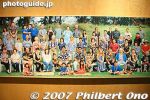
Six-generations of a family on Maui, Hawai'i. They started with immigrants from Yamaguchi Prefecture in 1891.
|
|
|

Kobe Center for Overseas Migration and Cultural Interaction was originally the National Emigration Center (国立移民収容所) where Japanese immigrants stayed for orientation before traveling mainly to South America (especially Brazil) by boat.The Emigration Center was used from 1928 to 1971 and it's Japan's only surviving building used for sending Japanese immigrants. Later renamed Kobe Emigrant Education Center and then Kobe Emigrant Assistance Center and Kobe Emigration Center (神戸移住センター).
|
|

This was where the Japanese immigrants would stay for up to 10 days to prepare for their long boat journey and move to South America.Today, the center is partially a museum where a few of the old rooms used by the emigrants have been restored. Other rooms are rented, including an event hall, meeting rooms, and gallery spaces. It includes a consultation center for South American residents of Kobe.
Museu da Emigração e Centro de Intercâmbio Cultural de Kobe
|
|

During World War II, the facility was used by the Japanese military. Then it became a school for hospital nurses. Today, the building is a South America emigration museum and the base for the Kansai Brazilian Community.There are exhibition rooms showing Kobe's history of Japanese immigration, especially to South America. Art studios, art gallery spaces, and meeting rooms are also provided for cultural exchange.
|
|

It is also has a consultation center for South American residents of Kobe. Operated by the city of Kobe, the current facility opened on June 3, 2009.15-min. walk from JR Motomachi Station (East Exit) on the JR Tokaido/Kobe Line. Walk straight along Koikawa-suji road (鯉川筋). Or 10-min. walk from Kencho-mae Station on the subway line. From JR Shin-Kobe Station (shinkansen), 10-min. taxi ride.
|
|

Monument for the "Birthplace of Japan's Emigration to Brazil" (ブラジル移民発祥の地)
|
|

Entrance.Open 10:00 am -5:00 pm (enter by 4:30 pm), closed Mon. (open if a national holiday and closed on Tue. instead) and December 29 to January 3. Admission: Free
|
|

Portuguese notices.
|
|

The 1st and 2nd floors have the emigration exhibition rooms. The 3rd floor is mainly offices of local Brazilian groups, and the 4th floor has rented studios for artists.
|
|
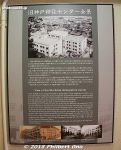
Old Kobe Immigration Center.
|
|

Map of Kobe Port on the floor.
|
|

Room showing farm tools.
|
|

Farm tools
|
|

Emigrant ship to South America.
|
|

Travel routes from Japan to South America.
|
|

It took over 50 days to travel from Japan to South America.
|
|

History of the emigrant center.
|
|
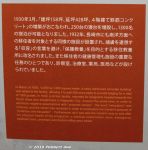
History of the emigrant center: 1930s
|
|
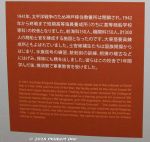
History of the emigrant center: 1940s
|
|
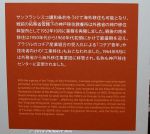
History of the emigrant center: 1950s-60s
|
|
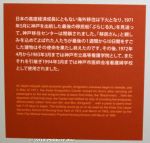
History of the emigrant center: 1970s-80s as a School of Nursing.
|
|
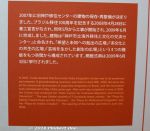
History of the emigrant center: 2007-2009
|
|

Statue of emigrants to Brazil. This same statue also stands at Meriken Park in Kobe.
|
|

Pictures of emigrants.
|
|

Exhibition room
|
|
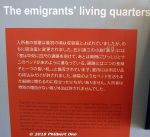
Emigrant's living quarters.
|
|
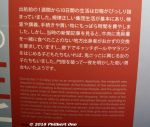
Life in the emigration center.
|
|

Lodging facility reconstructed here.
|
|

This is how the sleeping quarters looked like at the Kobe emigration center.
|
|

This is how the sleeping quarters looked like at the Kobe emigration center.
|
|

This is how the sleeping quarters looked like at the Kobe emigration center.
|
|

Japanese language textbooks.
|
|

Sports equipment.
|
|
|
|

Emigrants' luggage.
|
|

Electronical appliances.
|
|

Vintage camera
|
|

Corridor on an upper floor.
|
|

Artist studio
|
|

3rd floor
|
|

Exhibition room showing emigration photos.
|
|

Nice stairs
|
|
|
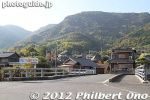
From the bus stop, cross this bridge over a river.
|
|
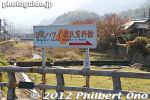
The sign points the way.
|
|
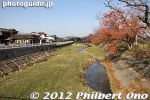
Cross the bridge over the river.
|
|
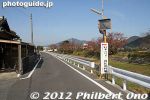
Then turn left as the sign says.
|
|
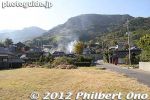
Museum up ahead.
|
|
|
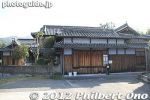
The Museum of Japanese Emigration to Hawaii.
|
|
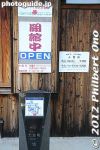
Go right for the front entrance.
|
|
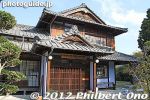
The museum is a large, two-story, Japanese-style house donated in 1997 by the family of Fukumoto Choemon (1881-1970) who emigrated to California and became successful and rich enough to build this house after returning to Japan. The museum opened in 1999.
|
|
|
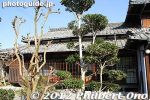
The museum is a spacious Japanese-style house.
|
|
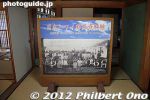
The museum is full of panel exhibits, mementos, artifacts, old books, and scrapbooks. It had a lot more than I had expected.
|
|

The museum staff person there could immediately tell that I was from Hawai'i even though I had said little more than "Hello" in fluent Japanese.
|
|
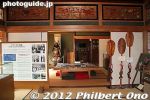
He knew immediately that I was from Hawai'i. That made me feel good actually, to know that I still haven't lost my Hawaiian traits even after living in Japan for many years.
|
|
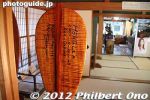
Oar from the Hokule'a signed by Nainoa Thompson when they visited Suo-Oshima in May 2007. That was a big event for the island and the Hawaiian community in Japan. I saw the Hokule'a only when they arrived at Yokohama.The Hokule'a is a traditional canoe where they use only the stars, wave motions, and bird observations for navigation like they did in ancient times. Nainoa was a pioneer in resurrecting and mastering this ancient form of navigation. You can read about their adventures on Suo-Oshima here, from May 20:
|
|

People from Suo-Oshima were among the first boatload of Kan'yaku Imin immigrants to Hawai'i in 1885. They emigrated due to dire economic conditions on the island.
|
|
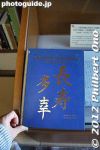
All the books in the museum are in open stacks where you can pull it out and read freely. Great for AJA researchers.
|
|
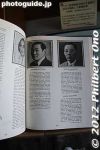
The scrapbooks and other delicate materials should be digitized though, something which they haven't done yet.
|
|
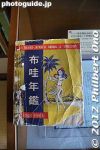
Old directory of all Japanese and Japanese-Americans living in Hawai'i. Never knew about this book.
|
|
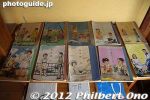
The museum also has two rooms full of Japanese school stuff. One room is full of books, scrapbooks, etc., donated by Ichisaburo Nakamura. He was a member of the Hawaii Kyoiku-kai (education council) which developed and published Japanese school textbooks.One of his scrapbooks had group photos of the Hawaii Kyoiku-kai who met every summer. I could recognize some of the faces. They were mainly Japanese school principals/teachers in Hawai'i. I spent a good amount of time in that room alone. Another room displayed old Japanese school textbooks including those published in Japan. I remember some of them from Japanese school and UH Manoa. Amazing to see all of them in one room.
|
|
|

View of Suo-Oshima from the 2nd floor of the museum. The island is quite well populated with houses and fishing ports in many locations.
|
|
|
|